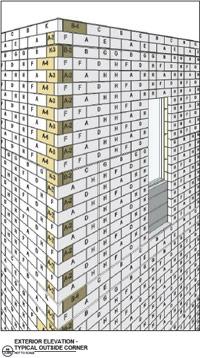Documentation of Complex Building Enclosures

Modern buildings are a combination of high performance materials, assemblies, and sub-systems that must function together as a complete and interrelated system. The solutions must be tailored to the needs of the client, environmental conditions, and the design vision for the project. How can architects organize and document the various components of the building to ensure they will work seamlessly together? Perhaps more importantly, how can we convey that information to the owner, third party reviewers/approvers, and the contractor in a way that clearly conveys the dependencies and interrelationships of a high performance building enclosure while also supporting the overall design of the building? This paper discusses methods for communicating the prescriptive requirements and the “Design Intent” of the building enclosure.
In construction, the phrase “Design Intent” is considered taboo. Contractors carry scars from architects who have relied upon this phrase to make the contractor perform work they do not consider within their scope. The inherently diagrammatic nature of design documents and the precise nature of a bid environment, make this scenario far too common. “Design Intent”, though, does not have to be a dirty word. We have reconsidered the use of “Design Intent” and propose that it can actually benefit all parties involved in a project if used correctly. If one acknowledges that contractors can’t bid or build what they don’t understand then it follows that they can bid and build what they do understand. We have spent the last several years developing a methodology for explaining the project priorities and critical design criteria that will set the contractor up to successfully implement the designer’s vision and meet the owner’s expectations


Add comment
Log in to post comments